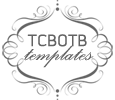Expanded notation example:
12,567= (1x10,000)+(2x1,000)+(5x100)+(6x10)+(7x1)
I created a game where they roll a dice to create a 4 digit, 5 digit, or 6 digit number and then they represent that number in expanded notation. The students have been loving it! Challenge them at home to show you an example and teach you what they learned.
We also began focusing on number lines. One thing I have noticed is as a whole we struggle with skip counting past 100. For example, the students count by 10s well, but when we get to 100, rather than connecting that the pattern continues to 110,120,130,etc, the students will switch to ...80,90,100,101,102,103,etc. I've been working on trying to build these patterns, but you can help at home too. For example, you can challenge your child to count by 10s from 100-300. (I definitely don't recommend starting at 0 and doing this all the way to 1,000 due to time, but even chunking numbers will help!) This is also helpful past the thousands. Example: Count by hundreds from 1,000-2,000 which would be 1,100, 1,200, 1,300, etc.
We did a number line activity where I passed out numbers and the class had to figure out where they belong on a number line which is easing us into the idea of rounding. We will focus a lot on the number line to help with rounding. For example, 34 is between 30 and 40, but on the number line you can see it is closer to 30 than 40. I like to use the example of miles on the road. If you were driving and your family's car ran out of gas at mile 34. Would you rather walk 4 miles back to the 30 mile exit or 6 miles to the 40 mile exit to get gas? This is a real world connection that seems to help them! We start by placing numbers correctly on a number line simply because that is a prerequisite to eventually be able to round mentally.
*The clothes pin number line collapsed once we finally placed our numbers, so I quickly improvised and threw tape on the ground and we placed them that way. It was pretty funny!
If you have any questions please let me know!











































